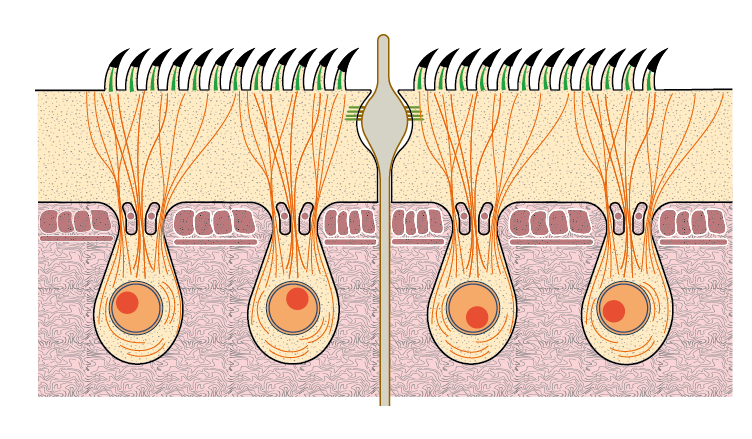Organization and composition of the tegument
Unlike most animals, parasitic flatworms are covered by a syncytial tegument (a giant cell with many nuclei) instead of a typical epidermis. All interactions between cestodes and their hosts occur through the tegument, including the absorption of nutrients, since these parasites lack a digestive system.
The tegument has an outer, superficial part that covers the parasite, which is connected to cell bodies in the interior where the nuclei are located. All new tegumental proteins are synthesized in the cell bodies and must be transported to the surface. We study the identity of these proteins, and how they are transported within the tegument. Furthermore, we study the effect of antiparasitic drugs in these processes.

“Distribución del citoesqueleto de microtúbulos (naranja) y
de actina (verde) en el tegumento de Mesocestoides corti”
Funding:
PROYECTO ANII Fondo Clemente Estable 2019: Organización y tráfico intracelular en el tegumento de cestodos: roles del citoesqueleto de microtúbulos. (Responsable: Uriel Koziol)
PROYECTO ANII Fondo Clemente Estable 2021: Proteómica comparativa y mecanismos de reparación del tegumento de cestodos, una estructura esencial en la interacción hospedero-parásito. (Responsable: Uriel Koziol)